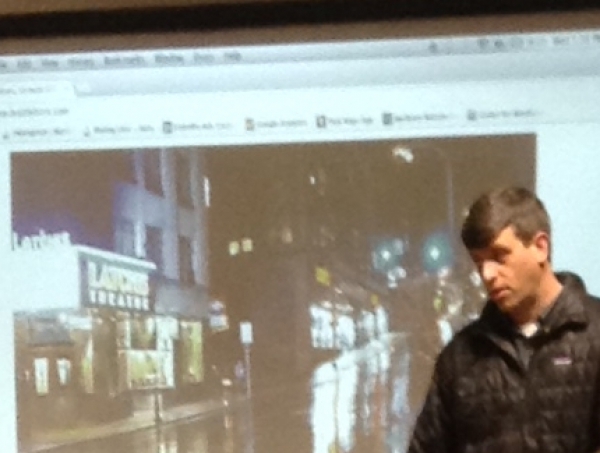BRATTLEBORO — Downtown will burst into full bloom this summer.
The Downtown Alliance has expanded its flower program while managing to maintain a level-funded budget for the upcoming fiscal year.
Members of the Downtown Alliance - formerly known as Building a Better Brattleboro (BaBB) - unanimously approved the organization's fiscal year 2016 work plan and budget at a brief meeting Nov. 12 at the Marlboro Graduate Center.
In a budget summary handed out at the meeting, Board Chair Matt Livingston noted that the past year had held many changes for the alliance - starting with its name.
“There's [still] room for change,” he added.
The organization relinquished its ownership of the Robert H. Gibson River Garden to fellow nonprofit Strolling of the Heifers. The structure of the board of directors changed. The alliance also moved its offices further down Main Street and hired Jake Roberts as the downtown coordinator.
Roberts tendered his resignation this month after a year on the job. His last day as downtown coordinator was Nov. 11. Livingston said that the board will start looking to fill the position in the new year. The alliance has budgeted $25,945 for payroll.
A special assessment tax on downtown property owners funds the alliance's budget.
The alliance looks to use the raised through the tax as productively as possible, Livingston said.
In building the budget, the board continuously asked how it could do more with fewer funds, he added.
The $78,000 budget includes $41,500 in operational costs and funds for specific projects spearheaded by the organization's three committees: promotions, design, and economic development.
Livingston told the audience that the proposed budget is level-funded compared to the current fiscal year.
Each committee asked for a block of funding. None of them received their full request. The alliance found the greatest savings in its operational costs by reducing those expenses by $18,500 compared to the current fiscal year.
The flower program is one area where the alliance will increase funding, said Livingston.
The extra funds will expand the program's footprint and number of months that volunteers maintain plantings. Extra maintenance costs and equipment purchases are also factored into the flower program's $13,000 line item which increased 10 percent compared to the current fiscal year.
Livingston described the program as “successful and popular.”
Some members questioned slotting more funds toward the flower program while decreasing other programs, like the holiday lighting program which was reduced by $4,000.
Retailers bring in almost half their year's profits in November and December, said members like shop owner and artist Penelope Wurr.
Merchants said they want the downtown to be as well-lit as possible during those two months.
Livingston responded to members' concerns saying that, for now, the alliance needs to focus its energy and resources where it can have the most success.
He added that past investments in new LED lights and other lighting-related infrastructure means the alliance won't need to spend as much on lighting going forward.
Entergy no longer donates $10,000 toward holiday lighting in downtown.
Other highlights from the work plan included the economic development committee's focus on establishing a shared innovator and business incubator space in the downtown.
Also on that committee's plate is pitching articles about Brattleboro to national news outlets such as The New York Times.
The promotions committee intends to focus its efforts on improving downtown's digital presence and marketing. The committee will partner with Brattleboro Area Chamber of Commerce to develop a “Brattleboro is open for Business” promotion alerting new businesses to opportunities to move to downtown.
Livingston told the audience that the board will ramp up its fundraising activities in the new fiscal year. The board has set immediate goals - but won't limit itself - of raising $1,000 in new memberships and $5,000 through contributions and grants.
The Downtown Alliance receives most of its operating revenue for programs and salary of the downtown coordinator through a special assessment tax on properties within the Downtown Improvement District or DID. The district includes the central business district of downtown.
The alliance anticipates presenting its budget and work plan to the Selectboard by Dec. 3. The Selectboard has the authority to approve taxation of the downtown properties.
Brattleboro's downtown program, however, is not a municipal program. It exists under the auspices of the state's Downtown Program, which aims to preserve Vermont's downtowns and keep them vital areas of commerce.
Participating in the program gives communities access to grants and tax credits.
One requirement of program participation is having a designated organization - in Brattleboro's case, the Downtown Alliance - to manage the program. The designated organization must have a designated funding source like the DID tax.
